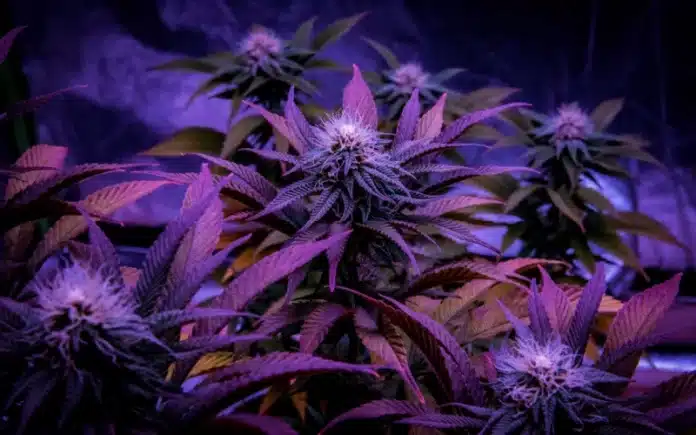Lawmakers in the Ohio Senate want to eliminate home grows, increase the tax rate and change who gets the money from the state’s new legal marijuana program
Lawmakers in the Ohio Senate want to eliminate growing marijuana at home, increase the tax rate and change who gets the money from the state’s new legal marijuana program, according to changes announced Monday.
The overhaul, which was added to an unrelated liquor bill Monday, comes after Ohio voters approved legal marijuana in a 57-43% vote last month. The Ohio Senate plans to vote on the new House Bill 86 on Wednesday.
Sen. Rob McColley, R-Napoleon, said Ohio voters wanted those 21 and older to have access to marijuana products, and these changes don’t stop that. Sen. Bill DeMora, D-Columbus, said the proposed changes go against the will of the voters.
Tom Haren, a spokesman for the campaign to legalize marijuana, said some Ohio senators want to “gut Issue 2’s most important provisions, including home grow and social equity, and to put in place higher taxes that will entrench the illicit market and force Ohioans to continue to buy their cannabis products in Michigan.”
What would the Senate changes do to legal marijuana in Ohio?
The Senate’s proposed changes would:
- Eliminate growing marijuana at home. Issue 2 allows six plants per person and 12 per household.
- Increase the tax on legal marijuana sales from 10% to 15%. Add a 15% tax on cultivators.
- Change how tax revenue would be spent. About 45% would go to Ohio’s general revenue fund for state operations, 30% to law enforcement training, 15% to a substance abuse prevention and treatment fund and 10% to a safe drivers program. This eliminates any money for municipalities with dispensaries.
- Reduce the levels of THC, the substance responsible for the drug’s effects. Under Issue 2, regulators must set a maximum amount of THC allowed in products, and that number must be at least 35% for plant material and 90% for extracts. Senators want to reduce that to 25% for plants and 50% for extracts.
- Reduce the amount someone could have to one ounce of plant material, five grams of extracts and 500 milliliters of THC in any form.
- Marijuana could only be smoked or vaped in private residences. Apartment complex owners could ban marijuana use for their tenants.
- Ban products shaped like bears, cartoons or fruit. Advertisements could not be marketed to those under 21 years old.
- Employers could ban marijuana and refuse to hire someone because of marijuana use.
- Municipalities could ban marijuana cultivators, processors and dispensaries ? but not consumption, McColley said.
- Limit the number of dispensaries to 230 locations, which is less than the 350 allowed under Issue 2.
It’s not clear if these proposals have enough support in both chambers to take effect before Issue 2 does on Thursday. A spokesman for House Republicans declined to comment Monday. Gov. Mike DeWine’s focus is creating a legal marijuana market that works, is regulated and prevents a black market from thriving, spokesman Dan Tierney said.
Opponents of growing marijuana at home say it will lead to that black market DeWine fears. “The concern is that is going to lead to a much more robust, harder to track, harder to tackle black market than we have right now,” McColley said.
DeMora, the Columbus Democrat, said he hopes the committee will be open to changes. Voters in rural Ohio, in particular, voted for Issue 2 because of the ability to grow marijuana at home, he said.
“The voters passed this overwhelmingly in both rural and urban counties,” he said. Under the new proposals, “it’s a shell of what was passed.”














